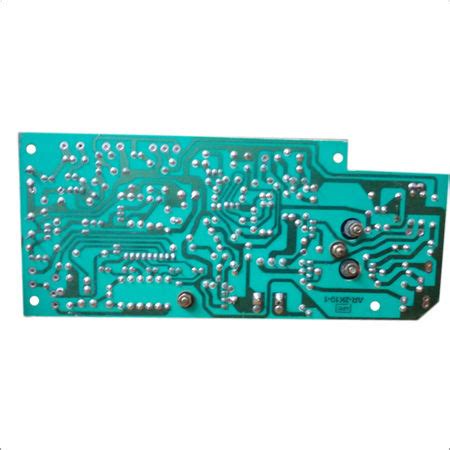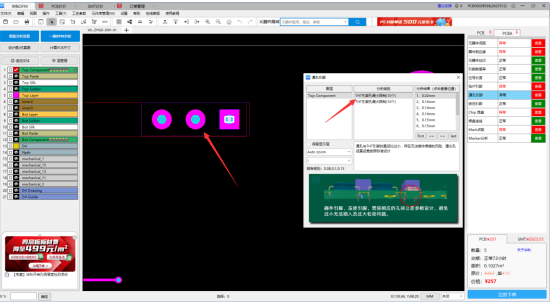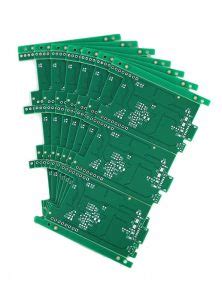Enhancing Electronics Performance Through SMT Assembly Services

Key Takeaways
Surface Mount Technology (SMT) assembly services have revolutionized the landscape of electronics manufacturing, optimizing performance across various applications. One of the primary benefits of SMT is its ability to facilitate pcb assembly, allowing for more compact and efficient designs that meet modern electronic demands. These services streamline the assembly process and ensure high precision in placing components onto the board, which is crucial for maintaining optimal performance in devices.
The use of pcba (Printed Circuit Board Assembly) techniques results in reduced manufacturing times and fewer defects, which enhances reliability. As a result, companies can offer products with longer lifespans and better overall functionality. Additionally, technological innovations such as automated soldering processes and advanced inspection systems are boosting the efficiency of SMT assembly services.
The table below summarizes key advantages of integrating SMT assembly services into electronics manufacturing:
| Advantage | Description |
|---|---|
| Efficiency | Speeds up the production process by minimizing manual intervention |
| Precision | Ensures accurate placement of components to meet stringent specifications |
| Reliability | Reduces errors and enhances product durability through quality-controlled processes |
| Cost-Effectiveness | Lowers production costs due to faster turnaround times and reduced material waste |
In conclusion, leveraging smt assembly services not only enhances the performance of electronic products but also supports innovation by allowing manufacturers to stay competitive in a rapidly evolving market. By embracing these technologies, companies can harness new opportunities and drive future growth within their industries.
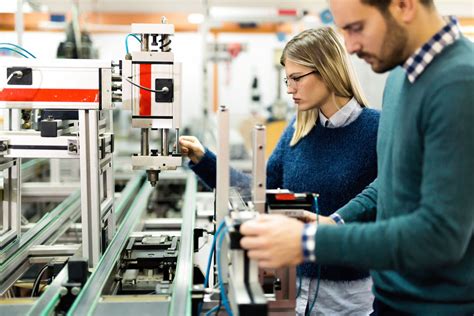
Introduction to SMT Assembly Services in Electronics Manufacturing
Surface Mount Technology (SMT) assembly services have emerged as a pivotal element in the realm of electronics manufacturing, significantly enhancing the overall performance of electronic devices. SMT allows for the placement of components directly onto the surface of printed circuit boards (PCBs), commonly referred to as pcb assembly. This approach is notable for its efficiency, as it reduces the time required for assembly processes and minimizes material waste. The integration of various components through automated machinery results in a higher density of components on boards – a trend that supports more compact designs without compromising functionality.
Moreover, these assembly services underscore precision in manufacturing. By utilizing advanced technologies and accuracy-driven processes, manufacturers can ensure that each component is placed correctly, thus improving the reliability of final products. As a result, many businesses have transitioned to using pcba services to leverage these advantages.
"Investing in high-quality SMT assembly not only improves product performance but also significantly enhances overall production capacity." This insight reflects a broader recognition within industries about the long-term benefits associated with implementing cutting-edge SMT solutions.
In conclusion, understanding the fundamentals and benefits of SMT assembly services is essential for professionals looking to enhance their electronics manufacturing strategies. As market demands continue to evolve, staying updated on innovations within this field will be crucial.
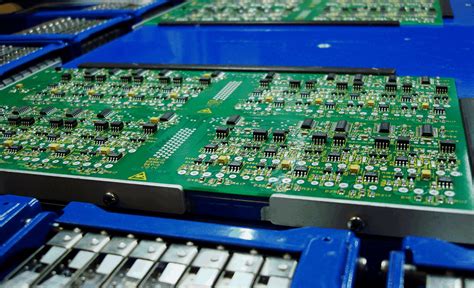
Key Advantages of SMT Assembly for Enhanced Performance
The adoption of SMT assembly services has proven to be a game-changer in the realm of electronics manufacturing. One of the primary advantages is the remarkable efficiency these services bring to the production process. By utilizing Surface Mount Technology (SMT), manufacturers can place components directly onto the surface of printed circuit boards (PCBs), significantly reducing assembly time while increasing throughput. This efficiency not only quickens time-to-market but also minimizes labor costs, making pcb assembly a more economically viable option.
Another critical advantage lies in the precision and reliability that SMT assembly offers. With advanced automation and sophisticated machinery, manufacturers can achieve exact placements for tiny components, enhancing the overall quality of the final product. This level of accuracy helps in reducing defects and ensuring that every PCBA meets stringent performance standards. The reliability inherent in SMT technology contributes to longer-lasting electronic products, which is crucial in today’s competitive markets where consumer expectations are high.
Furthermore, SMT assembly services allow for greater design flexibility. Engineers can incorporate a higher density of components in smaller spaces without compromising on functionality or performance. This capability is particularly beneficial for industries rapidly moving toward miniaturization, such as mobile technology and wearables.
In summary, by streamlining production processes and ensuring high precision and reliability, SMT assembly services significantly enhance electronics performance, thereby driving innovation within various sectors reliant on advanced electronics solutions. The benefits extend beyond mere cost savings; they encompass improved product quality and adaptability to emerging market needs – crucial factors that underscore the growing preference for SMT across diverse applications.
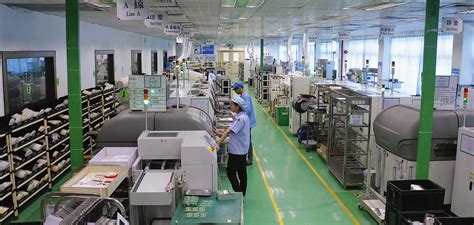
Technological Innovations Driving SMT Assembly Efficiency
The realm of SMT assembly services has undergone significant transformations due to various technological innovations that enhance overall efficiency. At the forefront of these developments is the use of advanced placement machines equipped with high-speed cameras and sophisticated software, allowing for unparalleled precision in component positioning. These machines significantly reduce the likelihood of errors, leading to improved yield rates and ultimately resulting in more reliable pcb assembly processes. Moreover, the integration of robotics and automation in SMT lines has streamlined operations, promoting faster production cycles without compromising quality.
Another innovation contributing to efficiency is the adoption of innovative materials that are compatible with high-density pcba designs. These materials not only improve thermal conductivity but also facilitate better electrical performance, which is crucial in today’s electronics market demanding higher functionality within compact footprints. Additionally, the implementation of comprehensive data analytics tools enables manufacturers to gain insights from real-time production metrics, allowing for quick adjustments and optimization of workflows. Such enhancements not only bolster productivity but also position companies favorably in an increasingly competitive landscape where efficiency and reliability are paramount. Consequently, these technological innovations solidify SMT assembly’s role as a critical component in elevating electronics performance across various applications.
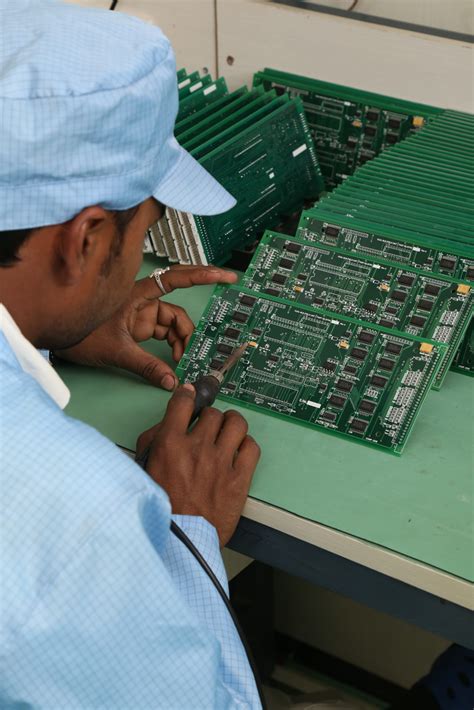
Precision and Reliability: The Cornerstones of SMT Assembly
The integration of SMT assembly services into electronics manufacturing is significantly influenced by its inherent ability to provide precision and reliability. In the world of pcb assembly, these elements are crucial as they directly affect the performance and longevity of electronic devices. The technology employed in pcba (Printed Circuit Board Assembly) not only streamlines the production process but also ensures that each component is placed with meticulous accuracy. This precision reduces the likelihood of defects, which can lead to expensive reworks or product failures down the line. Additionally, the reliability factor in SMT assembly comes from its ability to withstand various environmental stresses, thereby enhancing the overall durability of electronic products. Manufacturers are increasingly aware that investing in high-quality SMT assembly services translates into higher customer satisfaction and reduced malfunction rates. These cornerstones foster a sustainable manufacturing ecosystem, where innovations in efficiency are not just beneficial but necessary for staying competitive in a fast-paced electronics market. By prioritizing precision and reliability, companies can ensure their products meet stringent quality standards while simultaneously addressing evolving consumer demands.
Applications of SMT Assembly Services Across Industries
SMT assembly services have found a diverse range of applications across various industries, each reaping the benefits of advanced pcb assembly methods. In the automotive sector, for instance, the demand for compact and durable electronic components is crucial for maintaining vehicle safety and performance. SMT technology allows for efficient integration of high-density PCBA designs that improve signal integrity and reduce overall weight. Additionally, in the consumer electronics market, devices require precise manufacturing processes to meet high consumer expectations for functionality and aesthetics. Here, SMT assembly services enhance production speed while ensuring precision through automated systems. The healthcare industry also utilizes these services extensively, where reliability can have life-or-death implications; SMT ensures that medical devices are produced to stringent standards with consistent performance. Moreover, the telecommunication sector benefits from innovative SMT solutions that enable rapid development cycles and support cutting-edge technology deployments. Overall, as industries continue to evolve towards smaller and more powerful electronic solutions, the role of SMT assembly services is pivotal in driving advancements in performance, efficiency, and long-term reliability across the board.
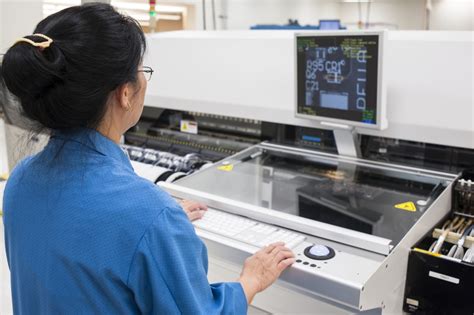
Future Trends in SMT Technology and Electronics Performance
As we look ahead, the future of SMT assembly services in enhancing electronics performance appears promising, with several key trends emerging. One significant development is the rise of advanced materials used in pcb assembly, which aim to improve conductivity while reducing weight and cost. These innovations push the boundaries of traditional manufacturing methods, enabling companies to produce more efficient and compact devices. Additionally, automation is playing a crucial role in optimizing pcba processes. With the integration of robotics and artificial intelligence, manufacturers can achieve higher accuracy and speed, drastically reducing errors associated with manual work. Furthermore, the Internet of Things (IoT) is shaping new design requirements for SMT assembly, fostering closer integration between smart devices and efficient manufacturing workflows. As industries increasingly demand higher performance standards, the evolution of SMT technology will be driven by these advancements, ensuring that precision and reliability remain at the forefront of electronics production. This not only translates to better performance for consumer electronics but also enhances functionality across diverse sectors such as automotive, medical devices, and telecommunications. In conclusion, as these trends evolve, they will pave the way for a new era of innovation in SMT assembly, ultimately revolutionizing how electronics are designed and manufactured to meet future demands.
Case Studies: Success Stories in SMT Assembly Integration
In the rapidly evolving landscape of electronics manufacturing, SMT assembly services have become pivotal in shaping the performance and reliability of various applications. Numerous companies have successfully integrated SMT technology into their production lines, yielding impressive outcomes. For instance, a leading consumer electronics firm leveraged SMT assembly to enhance their PCB assembly process, resulting in a significant reduction in production time while maintaining the highest levels of quality. This integration allowed for intricate designs and compact layouts that standard processes could not support. Moreover, a healthcare technology provider utilized PCBA solutions to meet rigorous regulatory standards and reduce failure rates in critical medical devices. Their adoption of SMT assembly services led to a notable improvement in product reliability and patient safety. Smaller companies, too, have benefited; several start-ups have emerged by harnessing the advantages of SMT technology, allowing them to compete effectively within niche markets while focusing on innovative designs that demand high precision and efficiency. These case studies illustrate how SMT assembly integration is not just about improving manufacturing processes; it drives innovation, reduces costs, and significantly enhances overall product performance, paving the way for future advancements in the industry.
Conclusion
In summary, SMT assembly services play a critical role in enhancing the performance of electronic products by leveraging advanced manufacturing technologies. These services provide numerous advantages, such as increased efficiency and precision in the production process. By minimizing defects and ensuring consistent quality, pcb assembly techniques significantly contribute to the reliability of finished products. Additionally, the integration of cutting-edge innovations within pcba processes paves the way for more intricate designs and improved functionality across various applications. As industries continue to evolve and demand more sophisticated electronics, SMT assembly will remain central to driving advancements in performance and dependability. The ongoing development in this field not only facilitates superior manufacturing practices but also supports businesses in meeting the dynamic needs of their customers effectively. As we look to the future, embracing these innovations will be essential for those seeking to maintain a competitive edge in the rapidly changing electronics landscape.
FAQs
What is SMT assembly and how does it enhance electronics performance?
SMT assembly, or Surface Mount Technology assembly, is a process used in electronics manufacturing that allows components to be mounted directly onto the surface of printed circuit boards (PCBs). This method enhances performance through greater density of components, improved reliability, and increased efficiency in the production process.
What are the key advantages of using SMT over traditional methods?
One of the primary advantages of SMT assembly is its ability to accommodate smaller and more complex pcb assembly designs. This results in lighter and more compact electronic devices. Additionally, the automation involved in PCBA manufacturing reduces human error and increases production speed.
How does precision impact the effectiveness of SMT assemblies?
Precision is crucial in pcb assembly, as it ensures that components are placed accurately on the board. This precision reduces the risk of defects and malfunctions, thereby increasing overall reliability. The use of advanced machinery for placement minimizes variations that could lead to performance issues.
What industries benefit from SMT assembly services?
A wide range of industries utilizes SMT assembly services, including automotive, telecommunications, consumer electronics, and medical devices. Each sector benefits from enhanced performance characteristics enabled by modern pcba techniques.
Interested in Learning More?
For more information on PCB assembly services, please click here.



